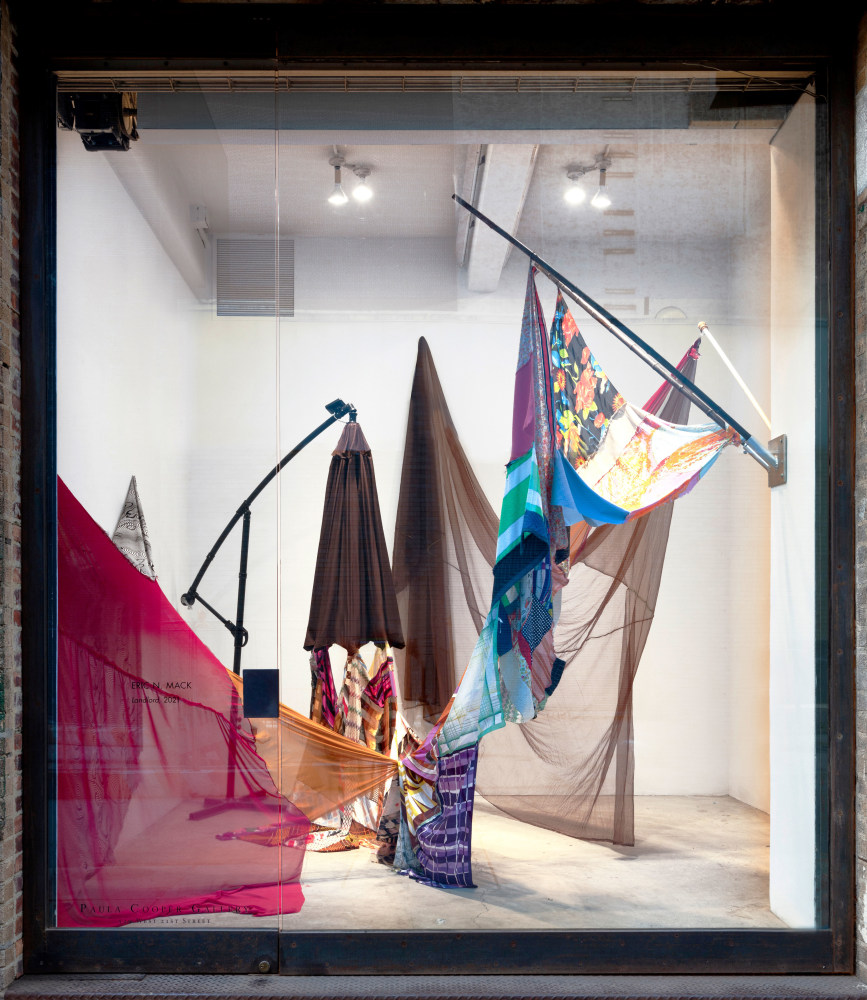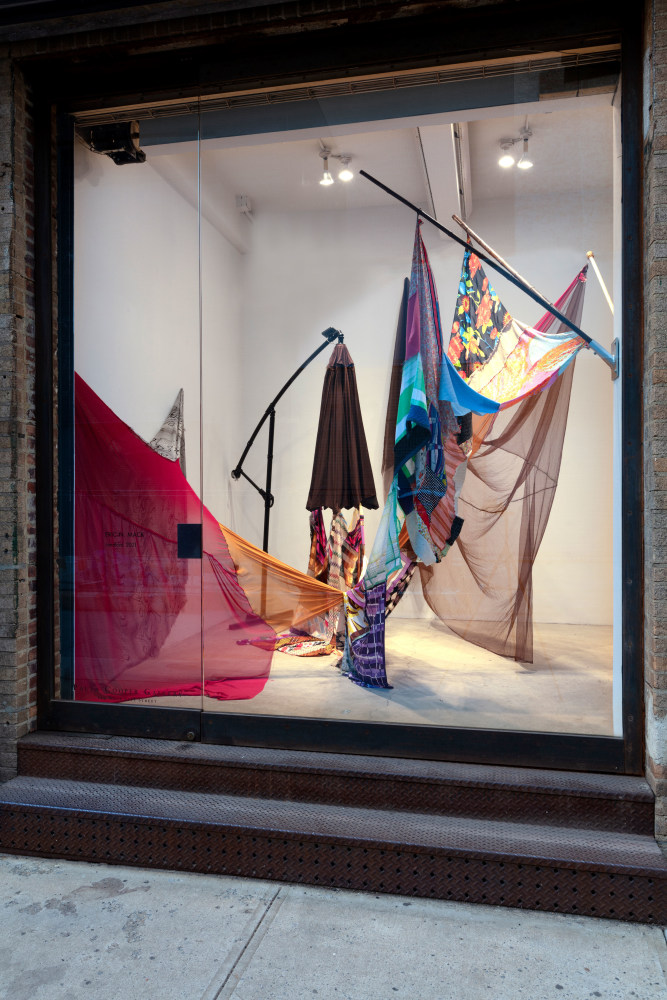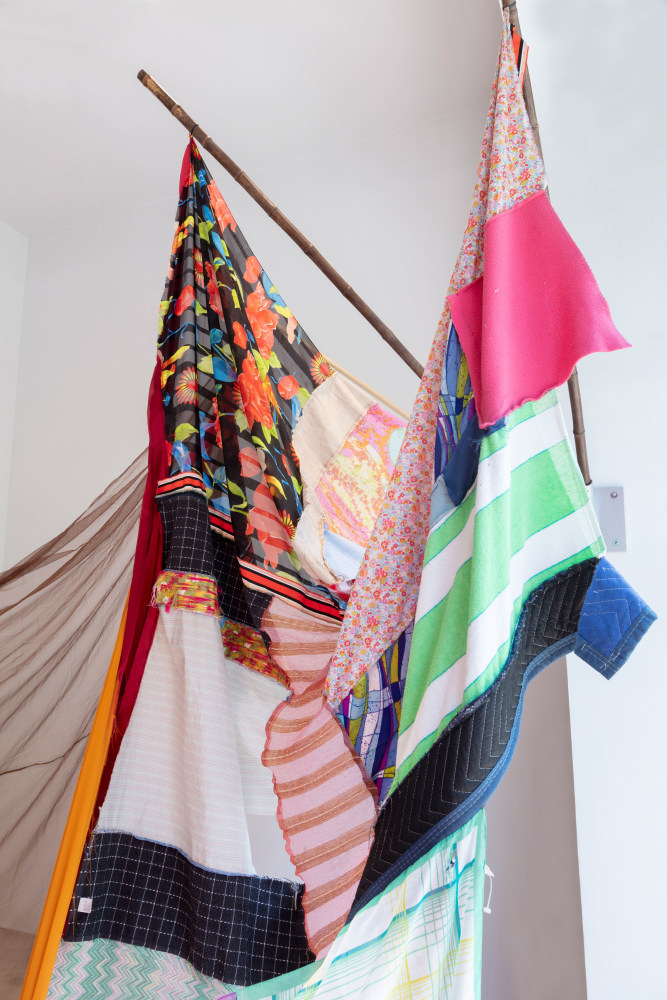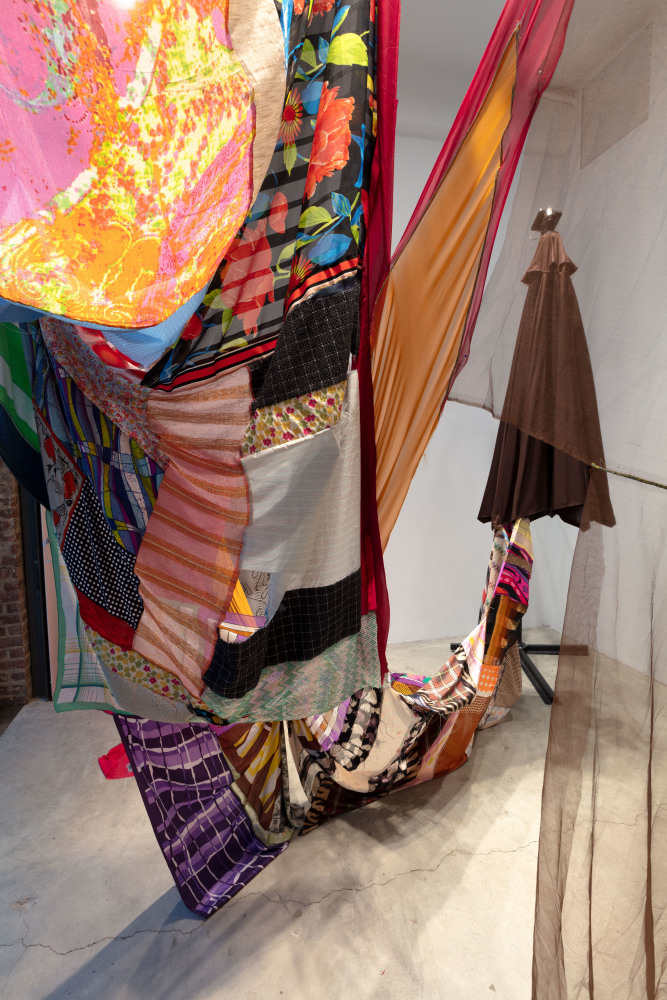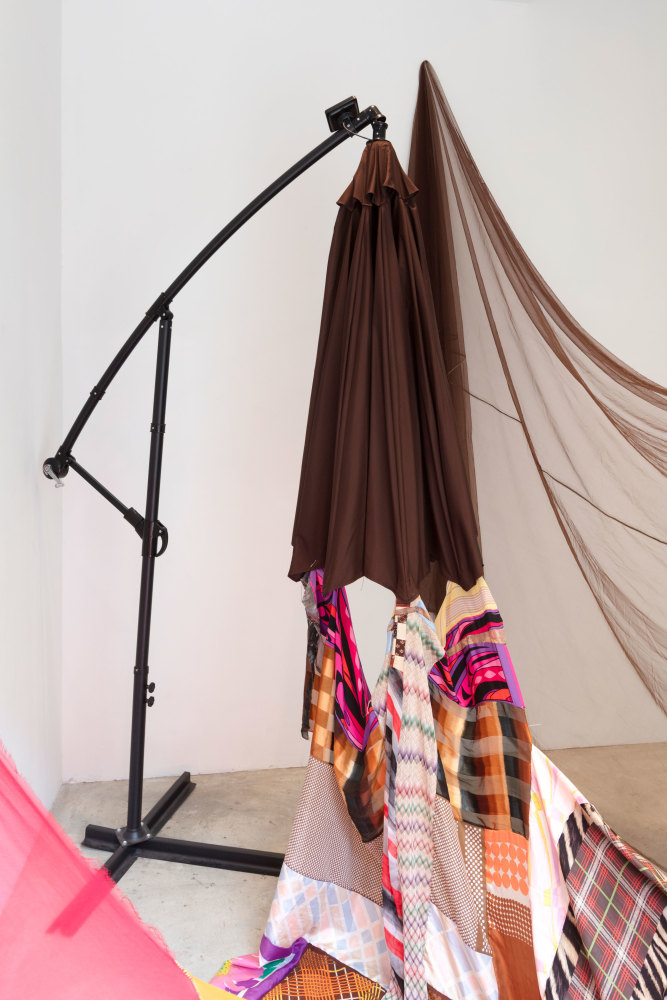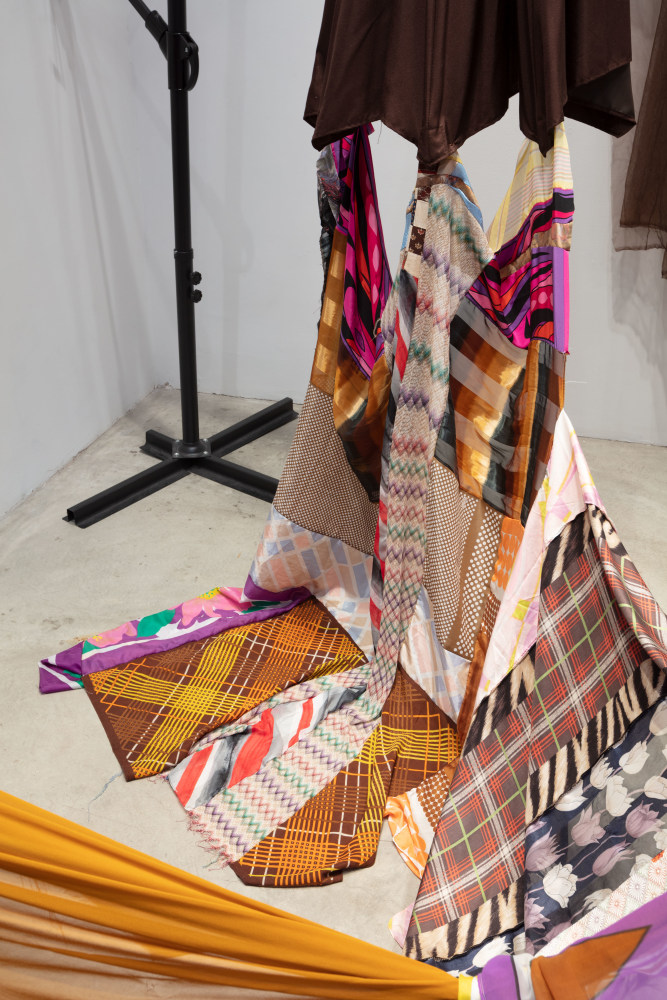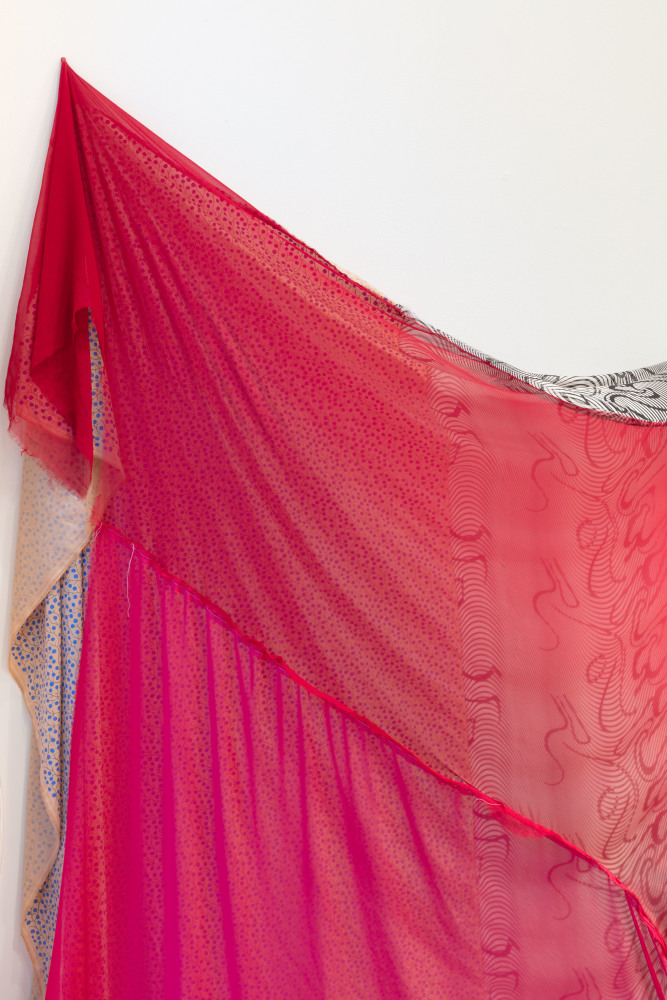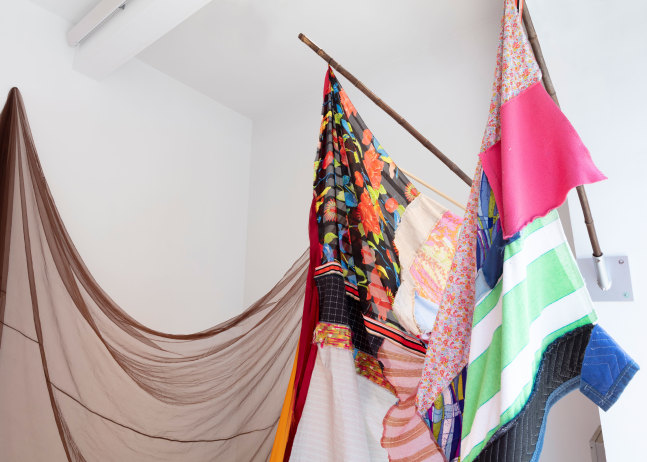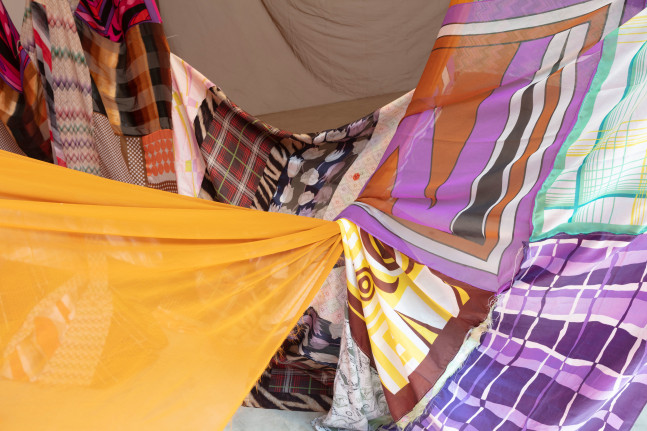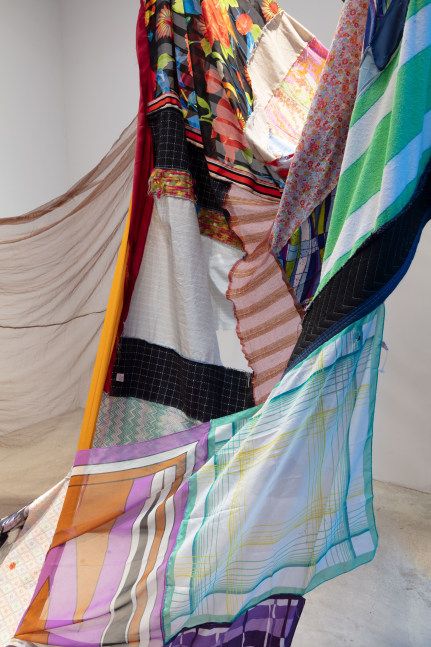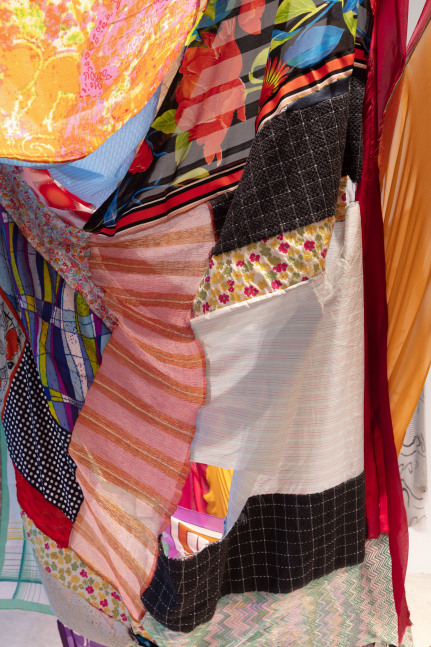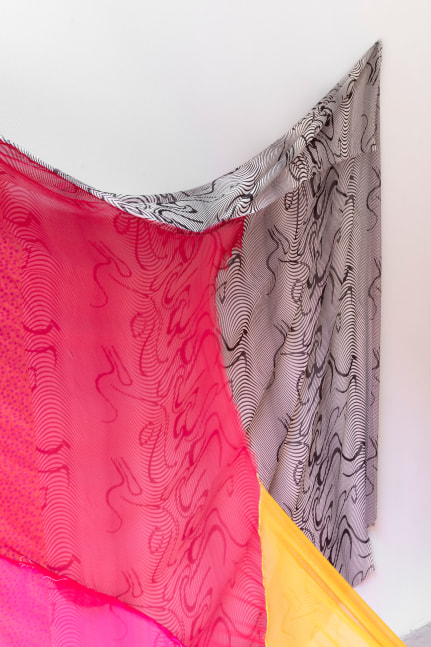Currently installed in the Paula Cooper Gallery vitrine at 521 W 21st Street is a jewel-box-like swath of multicolored fabrics supported by an unlikely armature. Gathered, constructed, and arranged by Mack, the work is a painting in found fabric and an assemblage in space. Three flagpoles propel from a corner-based mounting system to the right of the window, and an adjustable umbrella nestled into the opposite corner projects towards the center of the space. Although Mack has used flagpoles and umbrellas in the past, Landlord is the first time he has combined the two types of armatures in a single work. As supports, they are both practical and imbued with their own characteristics: the flagpoles specifically constructed to support drapery, the umbrella to protect or conceal a body.
From each of the supports, as well as various points in the corners and on the walls, hang billowing composite cloths in rich tones, graphic prints, and luxurious fabrics—taught in some places and gently curving in others—each creating a wash of color specific to its unique materiality and the cultural significance of its previous life. Fine silks, suiting, and packing blankets jostle and jive; their softness and saturation, heft or weightlessness, providing structural support and a wide spectrum of vivid color. Floral prints, in particular, serve as symbolic referents to the natural world. Mack is particularly fond of scarves, their standardized scale serving as a measurement for the body, their functionality as veil or ornament immediately recognizable. He considers scarves to be preexisting painting-like objects, and he has organized them compositionally to create a gridded index. The fabrics are gathered in the center of the space in an elegant contortion that establishes control in the way one might tie a knot at the end of a shirt to curtail unwieldy trails.
The vitrine presented the opportunity for Mack, who often creates immersive environments, to make a work primarily intended to be seen and not entered. Envisioning the installation behind glass as a kind of diorama, he worked to locate the disparate parts within the space, adjusting distance and proximity to activate a specific depth of field. While his installations are always necessarily site-specific, the title of this work in particular hints at the precarity of homemaking, settling down, and settling in, along with the contradictions between sharing and sheltering. Landlord is energized by the unrealized potential of the many forms it might take when installed in new and imaginary spaces.

